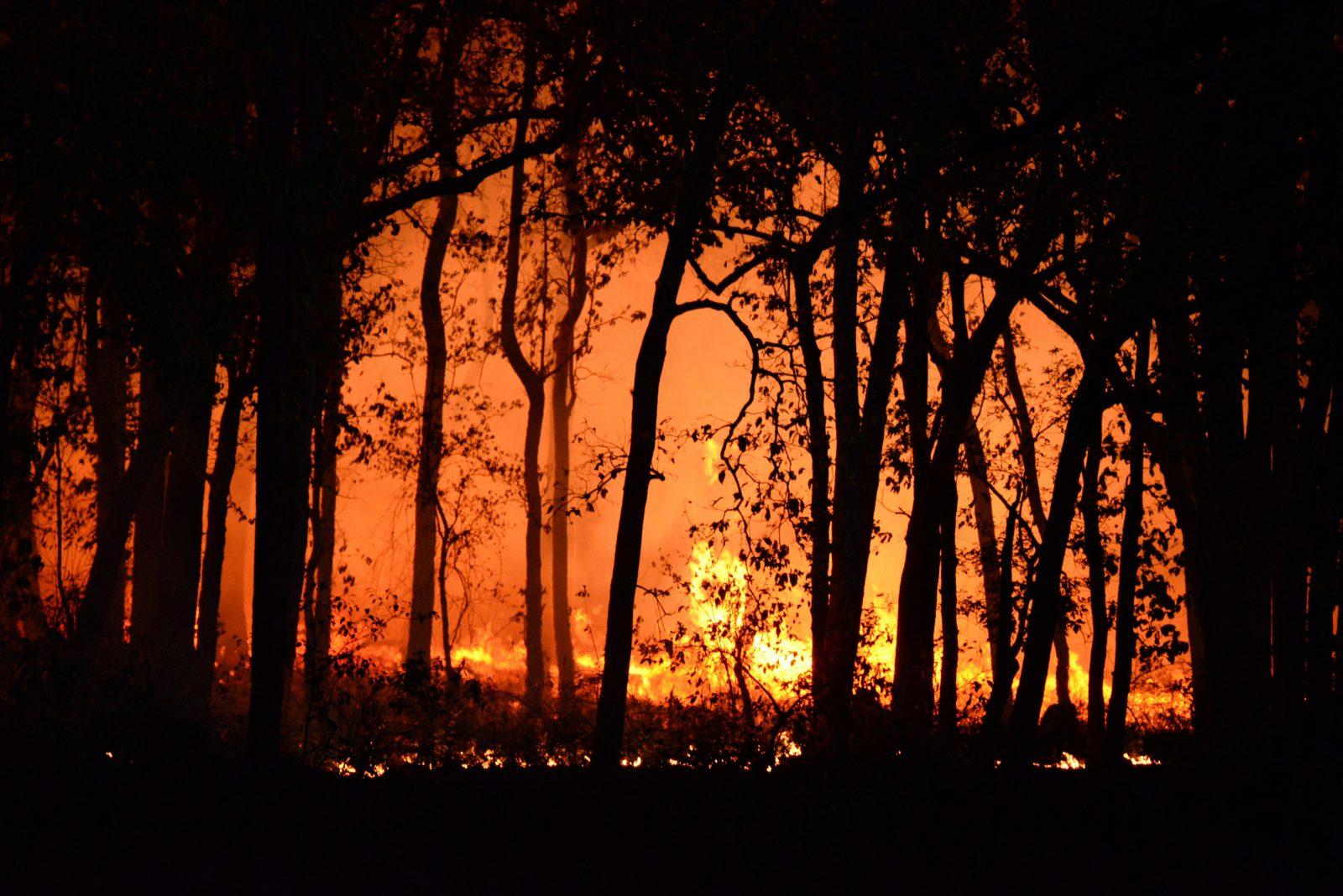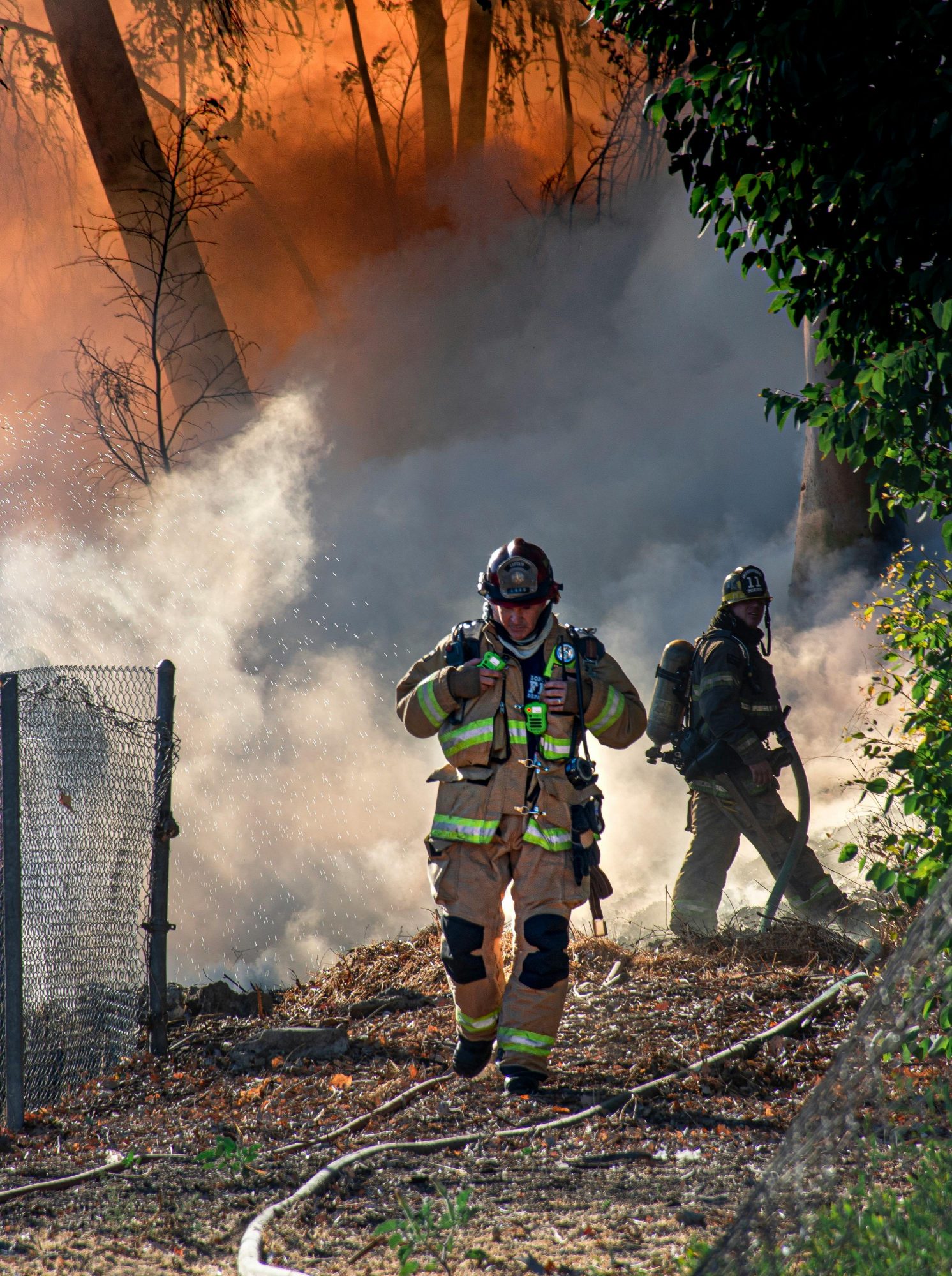Forest fires, or wildfires, can spread with alarming speed and unpredictable intensity, especially in dry, windy conditions, and once again this year, we have seen an increase in both the number of fires, and the severity. While authorities strive to close roads in affected areas well in advance, there remains a risk of being unexpectedly caught in such a situation while driving. If you ever find yourself facing a wildfire on the road, knowing how to react swiftly and calmly can be lifesaving.



Contents
1. Stay Calm and Assess the Situation
The immediate priority is to remain calm and act judiciously. Panic can lead to rash and dangerous decisions. If you detect smoke or flames nearby, take a moment to assess their direction and intensity. Determine if you can safely avoid the area without putting yourself at greater risk. Visibility can be severely reduced, and disorientation is common, so carefully evaluate your surroundings. If you are already surrounded by fire, attempting to retreat might not be the safest option.
2. Avoid Driving Through Flames
One of the most critical mistakes is attempting to drive directly through a burning area. What might appear less intense from a distance can quickly engulf your vehicle in intense heat and flames. The extreme heat can cause tyres to burst, and toxic gases can rapidly infiltrate the passenger compartment. If the fire completely blocks your path, turn around if it’s still safe to do so, or seek a safe area to take shelter.
3. Seal Your Vehicle’s Interior
If you are near smoke or fire, immediately close all your vehicle’s windows and turn off the ventilation system. Also, ensure all air intakes are closed. This action is crucial to prevent the ingress of smoke, which can be highly toxic. Wildfires often generate hazardous gases like carbon monoxide and sulphur dioxide, as well as fine particulate matter, all of which can rapidly impair breathing and lead to loss of consciousness.
4. Stay Informed
Whenever possible, tune into your car radio, particularly local Spanish stations. Emergency services and authorities frequently issue real-time alerts or instructions to those stations. If you have mobile network coverage and sufficient battery, official mobile apps can also provide vital updates, but be aware that networks can become congested or fail in such emergencies.
5. Seek Out Safe, Open Areas
If escape from the affected area isn’t possible, your immediate priority is to find the safest possible place to wait out the fire. Look for open, vegetation-free areas such as clearings, car parks, cultivated fields, or dirt/asphalt surfaces, ensuring you are well away from trees and bushes. Avoid stopping on slopes or in valleys; fires tend to spread more rapidly uphill, and smoke can accumulate densely in low-lying areas. Always keep an eye on the fire’s movement and try to position yourself as far away as possible, as flames can spread with astonishing speed.
6. Contact Emergency Services
As soon as it is safe to do so, call 112 (the European emergency number). Provide your precise location, using road names, kilometre markers, nearby landmarks, or GPS coordinates if your phone provides them. Describe the situation clearly: whether there’s visible fire, dense smoke, if you are trapped, or if you are able to move. The more accurate information you provide, the more effectively emergency services can locate and assist you.
7. Remain Inside Your Vehicle if Trapped
It might seem counter-intuitive, but the interior of a car can offer a degree of protection from fire, at least for a short period. While it’s not foolproof, it’s generally safer than attempting to flee on foot without a clear escape route. Running aimlessly in dense smoke, extreme heat, and poor visibility can be far more dangerous, with many fatalities occurring when individuals try to escape on foot with no clear direction.
If you find yourself surrounded by flames and unable to move forward or escape on foot, park your car in the clearest area possible. If feasible, orient the rear of the vehicle towards the fire, as the engine compartment is typically more flammable. Turn off the engine, leave the hazard lights on, then crouch as low as possible inside the car, covering yourself with clothing or thick blankets if available. Wait for the fire front to pass; it often does so within a few minutes, though it may feel like an eternity.
8. Conserve Phone Battery
Try to conserve your mobile phone’s battery as much as possible. Avoid using power-intensive applications like video streaming or social media, and activate power-saving mode. Save your battery for receiving crucial calls, emergency instructions, or for sending your location if required.
9. Consider an Emergency Kit
While nobody expects to be caught in a wildfire, if you frequently travel through forested, rural, or other high-risk areas, it’s prudent to carry a small emergency kit in your car. This could include a fire blanket or a foil emergency blanket, a torch, water, energy bars, an FFP2 mask (highly effective against smoke), a portable phone charger, and a physical map of the area. Carrying extra clothing made from natural fibres like cotton or wool, which offer better heat protection than synthetics, can also be beneficial.
10. Post-Fire: Depart Only When Safe
Once the immediate fire front has passed, do not immediately exit your car. Wait a few minutes for the smoke to clear. Carefully observe your surroundings to ensure there is no risk of new outbreaks or falling trees. If you can move, proceed with extreme caution and do not leave the area until you receive authorisation from authorities or can definitively confirm that it is safe to do so.
When you eventually manage to escape the affected area, it’s important to inform emergency services of your situation, even if you no longer require assistance. This helps them update their maps of where people are located and ensures rescue teams don’t spend unnecessary time searching for you.
Discover more from N332.es - Driving In Spain
Subscribe to get the latest posts sent to your email.

You must be logged in to post a comment.